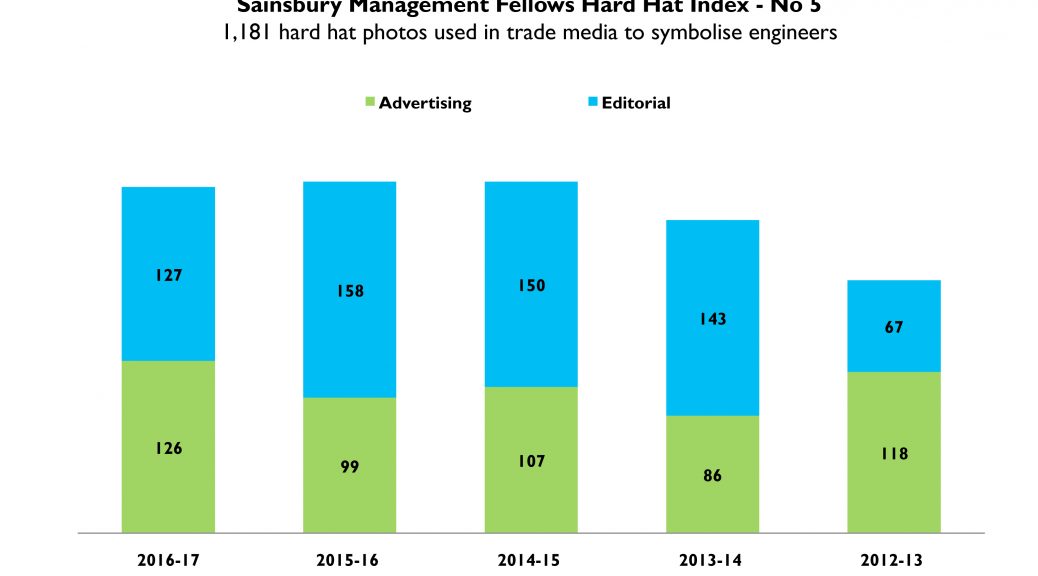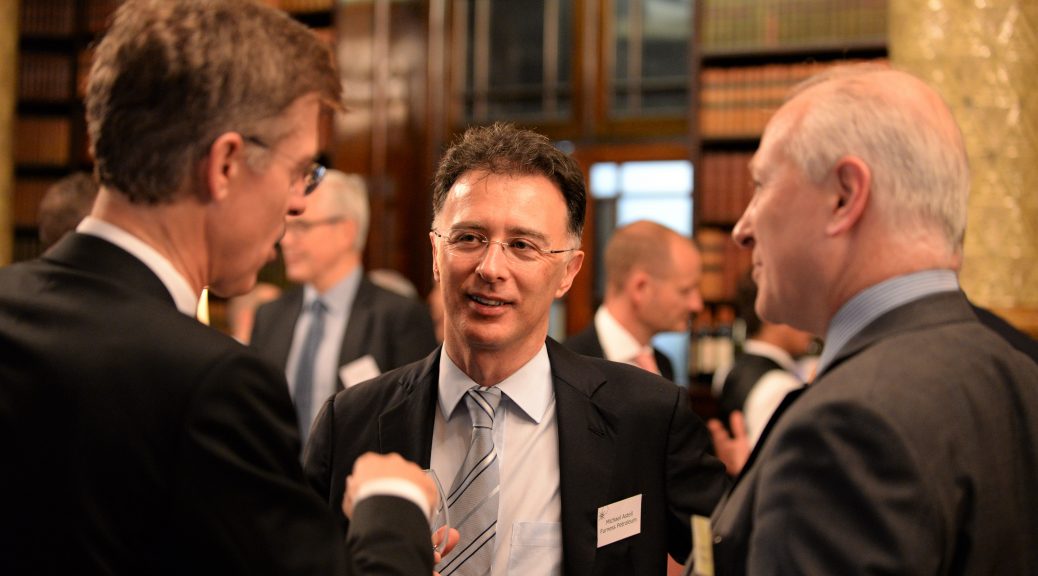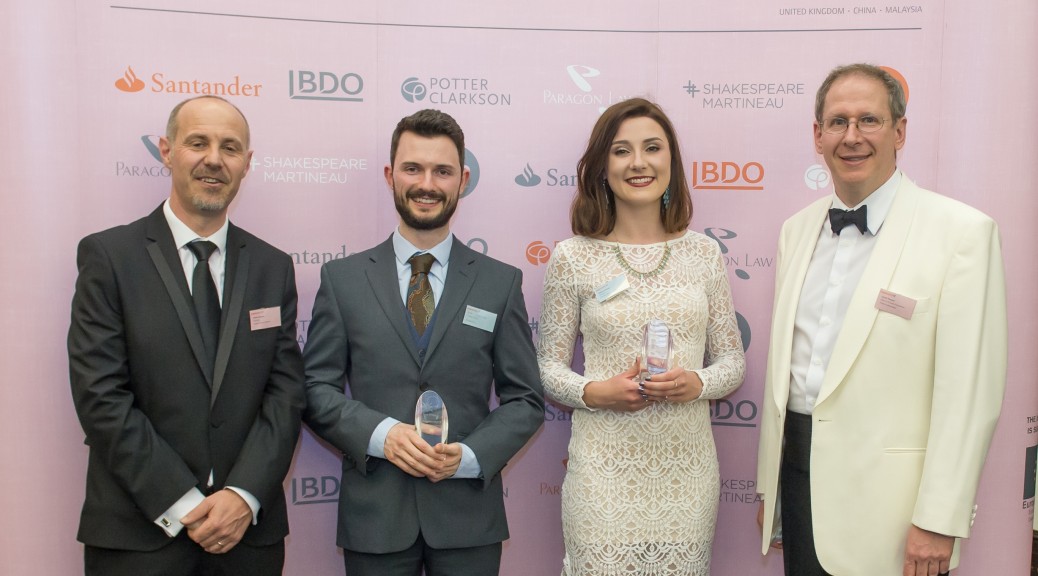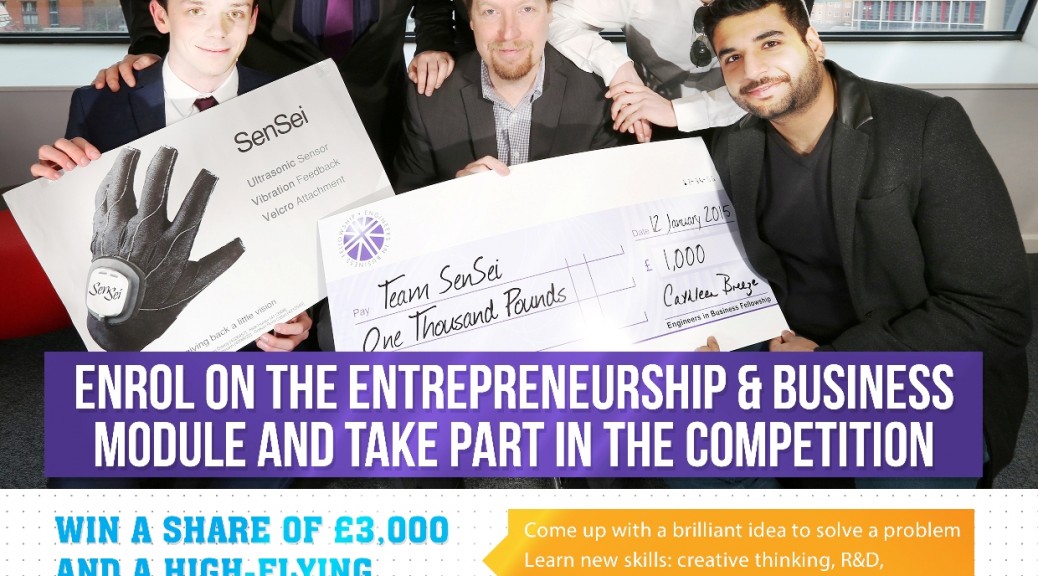The SMF Hard Hat Index shows a 19.6% tumble in the use of hard hats in articles – the first fall in four years.
Hard Hats dominate the image of engineers says the Sainsbury Management Fellows Hard Hat Index which has tracked such images in 17 engineering publications over five years. In that time 1,181 images of hard hat-wearing engineers have appeared in advertisements and articles. Images that SMF believes damages the image of engineers by reinforcing stereotypes and giving a very narrow view of the profession.
But change is in the air. The SMF Hard Hat Index shows a 19.6% tumble in the use of hard hats in articles – the first fall in four years.
In the Index’s launch year (2012/13), there were just 67 hard hats in articles in the monitored publications, but this figure climbed every year until this present Index.
The 2016/17 Hard Hat Index recorded 127 hard hats in engineering articles compared to 158 in the previous year.
After years of seeing the figures yo-yo infinitesimally, there is a breakthrough as engineering magazines start to use more imaginative visuals to communicate more thoughtful images of engineering.
But the image portrayed in articles is only half the story. The opposite has happened to the number of hard hat images used in advertising. The latter has soared by over 30%, from 99 hard hat images in the 2015/16 Index to 129 in the current Index. This is the largest number of hard hats used in advertisements since the launch of the Hard Hat Index.
SMF President, David Falzani MBE said,“This hike could be due to an increase in the volume of ads, the study currently does not track this information, but will in the future.
“Another interpretation of the big difference between the editorial and advertising use of hard hats might be that publishers are embracing the idea of promoting more diversified images of engineers, whereas they do not have input into advertising content; companies control their advertising messages.
“Our sector needs to show diverse images and role models of engineers so that influencers, gatekeepers, and young people understand that we work across all industry sectors, in different environments and that engineering offers dynamic, creative and rewarding careers. The ‘no hard hats’ message is gaining momentum. In the last couple of years, high-profile figures in the industry have spoken about the proliferation of hard hats, and competitions are being run by institutions to raise awareness of the problem and to inspire the use of better images.”
What happens to the Hard Hat Index when the advertising and editorial results are combined?
Whilst it is important to applaud the reduction of hard hats in articles, adding the advertising figure tips the scale in the wrong direction. Combined 256 hard hats were published in the titles monitored. Just one hard hat image less than the 2015/2016 Index.
In our workshops with engineering undergraduates, there was a consensus that advertisers should stop using hard hats and other stereotypical images and replace them with inspirational photos that tell better stories about the opportunities in engineering.
Hard hat images influence people’s view of engineers. Use of the term ‘hard hat’ rose rapidly between 1960 and 2000 (source: Google’s N-gram) most likely due to a focus on health and safety. While hard hats are essential in some industries, their relentless use to portray all engineers is misleading.
When the SMF YouGov survey asked 2,000 people what items they thought engineers primarily wear on an average working day, the hard hat came top with 63% of the votes, whereas a business suit received 25% of votes. Asked where engineers predominantly work, building and construction sites come top (69% of votes), followed by industrial sites (66% of votes), while offices came fifth. Most people picture engineers working on building, industrial or manufacturing sites, yet the reality is that many thousands of engineers also work in other locations such as offices. The image portrayed influences people’s thinking so ridding the media of the ubiquitous hard hat will help to change perceptions.




















 With
With 











 Tired of paying over-the-top rates for poor service, bad communication, and a total lack of market strategy? It might be time to switch—your chief executive, that is.
Tired of paying over-the-top rates for poor service, bad communication, and a total lack of market strategy? It might be time to switch—your chief executive, that is.